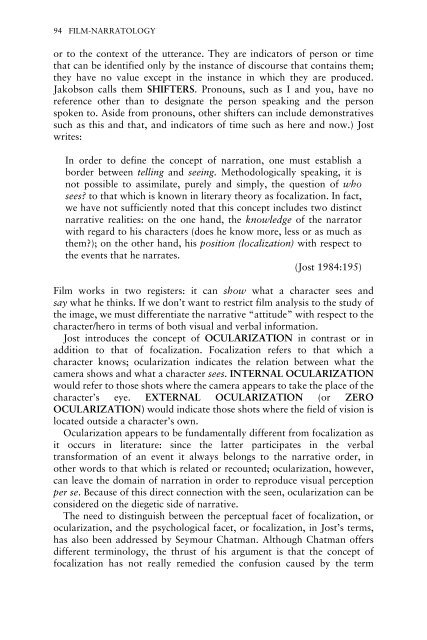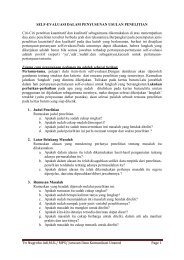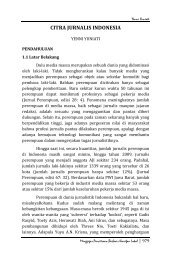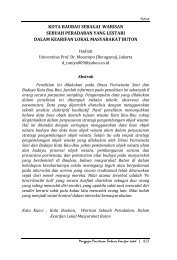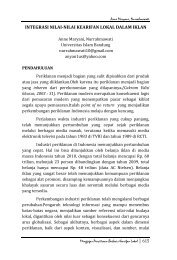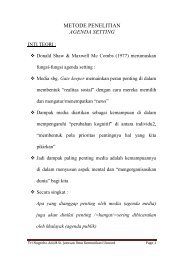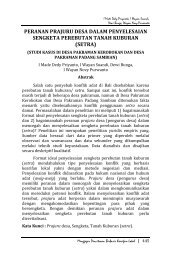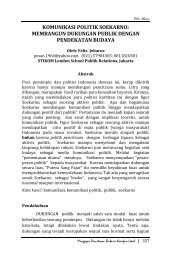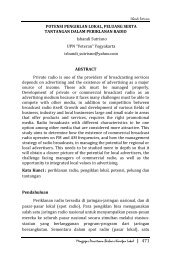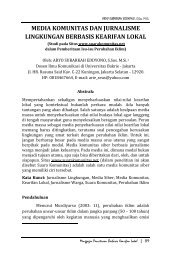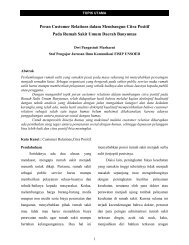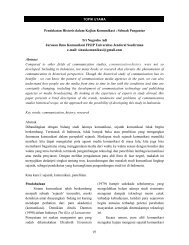New Vocabularies in Film Semiotics
New Vocabularies in Film Semiotics
New Vocabularies in Film Semiotics
Create successful ePaper yourself
Turn your PDF publications into a flip-book with our unique Google optimized e-Paper software.
94 FILM-NARRATOLOGY<br />
or to the context of the utterance. They are <strong>in</strong>dicators of person or time<br />
that can be identified only by the <strong>in</strong>stance of discourse that conta<strong>in</strong>s them;<br />
they have no value except <strong>in</strong> the <strong>in</strong>stance <strong>in</strong> which they are produced.<br />
Jakobson calls them SHIFTERS. Pronouns, such as I and you, have no<br />
reference other than to designate the person speak<strong>in</strong>g and the person<br />
spoken to. Aside from pronouns, other shifters can <strong>in</strong>clude demonstratives<br />
such as this and that, and <strong>in</strong>dicators of time such as here and now.) Jost<br />
writes:<br />
In order to def<strong>in</strong>e the concept of narration, one must establish a<br />
border between tell<strong>in</strong>g and see<strong>in</strong>g. Methodologically speak<strong>in</strong>g, it is<br />
not possible to assimilate, purely and simply, the question of who<br />
sees? to that which is known <strong>in</strong> literary theory as focalization. In fact,<br />
we have not sufficiently noted that this concept <strong>in</strong>cludes two dist<strong>in</strong>ct<br />
narrative realities: on the one hand, the knowledge of the narrator<br />
with regard to his characters (does he know more, less or as much as<br />
them?); on the other hand, his position (localization) with respect to<br />
the events that he narrates.<br />
(Jost 1984:195)<br />
<strong>Film</strong> works <strong>in</strong> two registers: it can show what a character sees and<br />
say what he th<strong>in</strong>ks. If we don’t want to restrict film analysis to the study of<br />
the image, we must differentiate the narrative “attitude” with respect to the<br />
character/hero <strong>in</strong> terms of both visual and verbal <strong>in</strong>formation.<br />
Jost <strong>in</strong>troduces the concept of OCULARIZATION <strong>in</strong> contrast or <strong>in</strong><br />
addition to that of focalization. Focalization refers to that which a<br />
character knows; ocularization <strong>in</strong>dicates the relation between what the<br />
camera shows and what a character sees. INTERNAL OCULARIZATION<br />
would refer to those shots where the camera appears to take the place of the<br />
character’s eye. EXTERNAL OCULARIZATION (or ZERO<br />
OCULARIZATION) would <strong>in</strong>dicate those shots where the field of vision is<br />
located outside a character’s own.<br />
Ocularization appears to be fundamentally different from focalization as<br />
it occurs <strong>in</strong> literature: s<strong>in</strong>ce the latter participates <strong>in</strong> the verbal<br />
transformation of an event it always belongs to the narrative order, <strong>in</strong><br />
other words to that which is related or recounted; ocularization, however,<br />
can leave the doma<strong>in</strong> of narration <strong>in</strong> order to reproduce visual perception<br />
per se. Because of this direct connection with the seen, ocularization can be<br />
considered on the diegetic side of narrative.<br />
The need to dist<strong>in</strong>guish between the perceptual facet of focalization, or<br />
ocularization, and the psychological facet, or focalization, <strong>in</strong> Jost’s terms,<br />
has also been addressed by Seymour Chatman. Although Chatman offers<br />
different term<strong>in</strong>ology, the thrust of his argument is that the concept of<br />
focalization has not really remedied the confusion caused by the term


